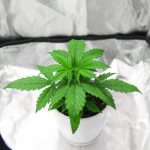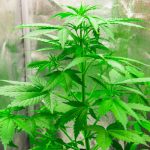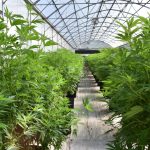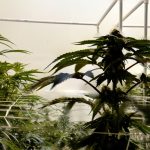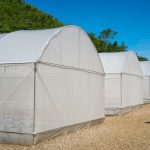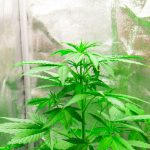Although we’re all big fans of Mother Nature here, sometimes, she can be a real pain in the bud! With no control over the weather, we have to take whatever comes our way in our stride, which can be a nightmare when trying to cultivate some sweet, sweet leaf.

Thankfully, grow tents provide us with our own little ecosystem that we can control. With the right equipment, we can grow incredible herb indoors, come rain or shine, but will they work outside?
The quick answer is yes — Woo! But before you head out to set up your personal (we)Edan, there are some things to mull over.
Do Grow Tents Work Outside?
Grow tents can indeed work outside, but it’s a tough life out there exposed to the elements, so you need to do all you can to shore up your setup if you want this endeavor to have a happy ending. Let’s check out the hurdles you’ll run into when trying to grow indoors, outdoors.
Lack Of Electricity
With no walls comes a slight problem… no wall outlets. And being that you’re going up against the elements in the great outdoors, you’re going to need some electricity.
Now, this isn’t a complete dealbreaker, as there are ways to bring power to an outdoor grow tent, such as weatherproof extension cables or a solar panel array and solar battery, but it does complicate matters somewhat.
You don’t have that steady, reliable electricity, so it pays to have a plan B and C just in case you run into some problems with your primary power source.
Unless you have a robust solar system or similarly impressive alternative, it’s probably best to start quite small with your outdoor growing operations (Also check out Can Solar Panels Power A Grow Tent?). Give just a few plants the TLC they need, and see how things go.
Going too big too soon and not having the proper “infrastructure” can lead to a lot of wasted time, energy, potential, and of course, weed.
The Weather
Have you ever been camping on a windy day? It’s a total nightmare. Your tent flaps are flipping up and slapping you silly as you try to set up base, the drawstrings on your coat threaten to take your teeth, and unless you peg everything down tight, your shelter for the night may float away.
This is just a taste of what you’ll be up against when using a grow tent outside. It will need to be pegged down with all the pegs you can possibly throw at it. And as most grow tents are designed for indoor use, you’ll need to customize it with some sort of weatherproofing.
The key to a successful growing tent is consistency in all things — We’re talking temperature, light, downtime, humidity, and water. So, outside, you have to perpetually compensate for the weather changing on a dime beyond the thin walls of your tent.
Bugs, Bugs, & More Bugs
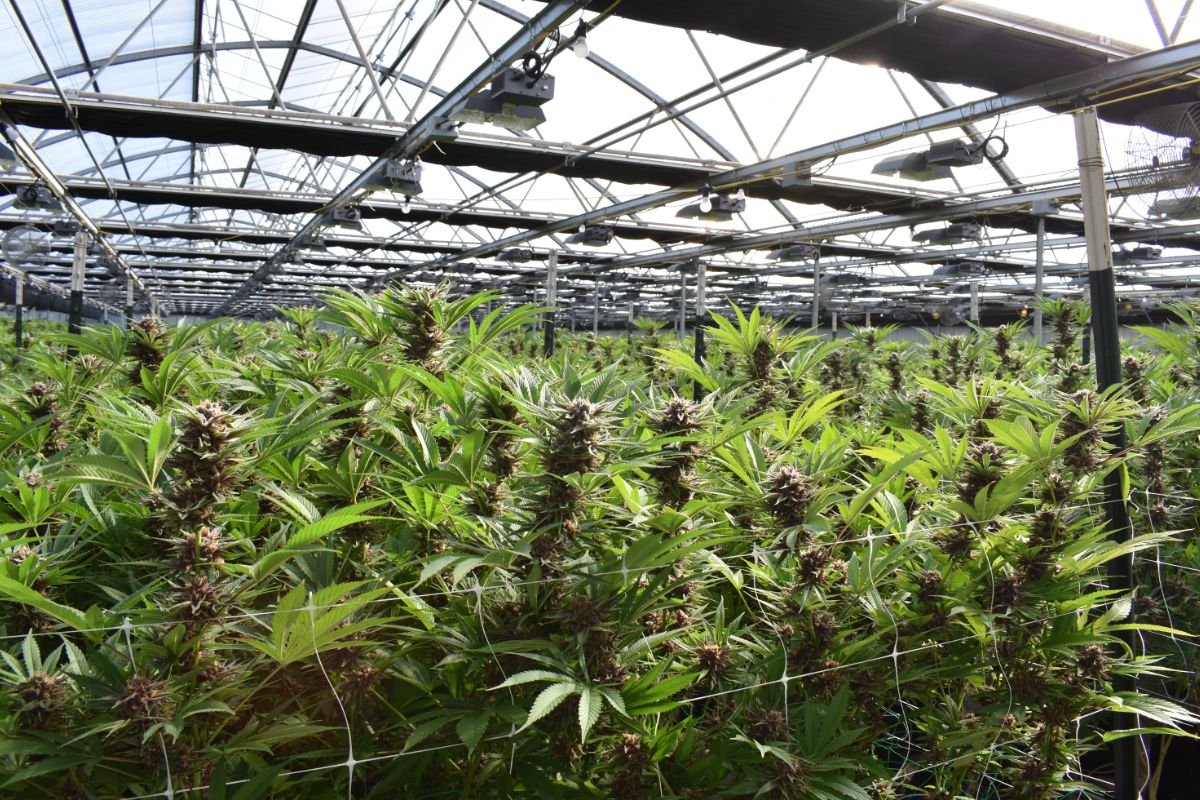
It doesn’t matter what you do, bugs will find ways into your grow tent, and they don’t call these things pests for no reason! The good news is that you can take steps to make an invasion a little trickier for them.
Also, they say you shouldn’t fight fire with fire, but (top tip alert) by intentionally introducing some insectivorous bugs such as ladybirds and grasshoppers as soon as you set up shop, you give your plants the best possible protection.
Do You Vent A Grow Tent Outside?
When setting up a grow tent indoors, an exhaust fan is essential to provide ventilation and give you comprehensive control of the micro-climate within. When you shift things into the outdoor realm, a ventilation system is still necessary for a few reasons.
Firstly, you’ll still need to control the temperature in there, and a vent is a great way to do so, and secondly, plants need air to thrive, and a sealed-off environment such as a grow tent doesn’t allow for much airflow.
Combine that with the fact you’re actually reducing flow by weather- and bug-proofing, and your leafy babies don’t stand a chance.
What Temperature Should My Grow Tent Be Outside?
One of the golden rules of growing weed is that you stick to a certain temperature range no matter where you establish your crop. Whether your tent is indoors, outdoors, or in your lady’s chambers, your goal is to maintain a temperature of between 75 and 85 °F.
Realistically, you could let thermals drop to around 68 °F now and again without seeing any severe consequences, but anything lower than that, and you’ve got trouble, friend.
Can You Use A Grow Tent In The Winter?
You can still use a grow tent in the winter, but you have to compensate for the plummeting temperature. This can be tricky to do outside, but it’s not impossible. Using things like heat mats or an electric heater can work.
You’re likely planning on bringing some heat mats into the fold anyway to help with germination and to coordinate sprouting. Now you’ll get more use out of them and get your money’s worth.
Benefits Of Grow Tents
Okay, so we’ve covered a lot of the doomy and gloomy things thus far, so let’s close things out on a high note, celebrating all the amazing benefits grow tents bring to the table.
- Year-round cultivation — Forget the seasons, with a grow tent, you control all influencing parameters, so you can grow 365 days a year.
- Compact footprint — It used to be that if we wanted to grow our own, we’d have to use a pretty big facility, but the humble grow tent allows us to make very small spaces hugely productive.
- Energy efficiency — Grow tents shut down many external factors that we’d otherwise have to counteract, which would use a lot of energy.
- Fewer pests — Stoner bugs are always trying to snatch our crops, but a grow tent places a barrier between them and the goods. As mentioned earlier, it’s not a comprehensive bug blocker, but it does have an impact.
- Light mass — Measuring light for a growing endeavor is difficult, but it’s a whole lot easier if you have a simple, standardized space to work with.
Final Thoughts
Using a grow tent outside has its trials and tribulations, but if it’s the only option available to you, with care, attention to detail, and the proper equipment, it can be done.
If you live in a particularly volatile climate, it might be more effort than it’s worth. But those who live in temperate locations may just be on to a winner. Best of luck, greenthumbs!
- 5 Best Weed T-Shirts For Women - June 26, 2023
- What To Wear To A Cannabis Café: 10 Awesome Options - June 26, 2023
- What Is Stoner Girl Clothing? All You Need To Know - June 26, 2023

